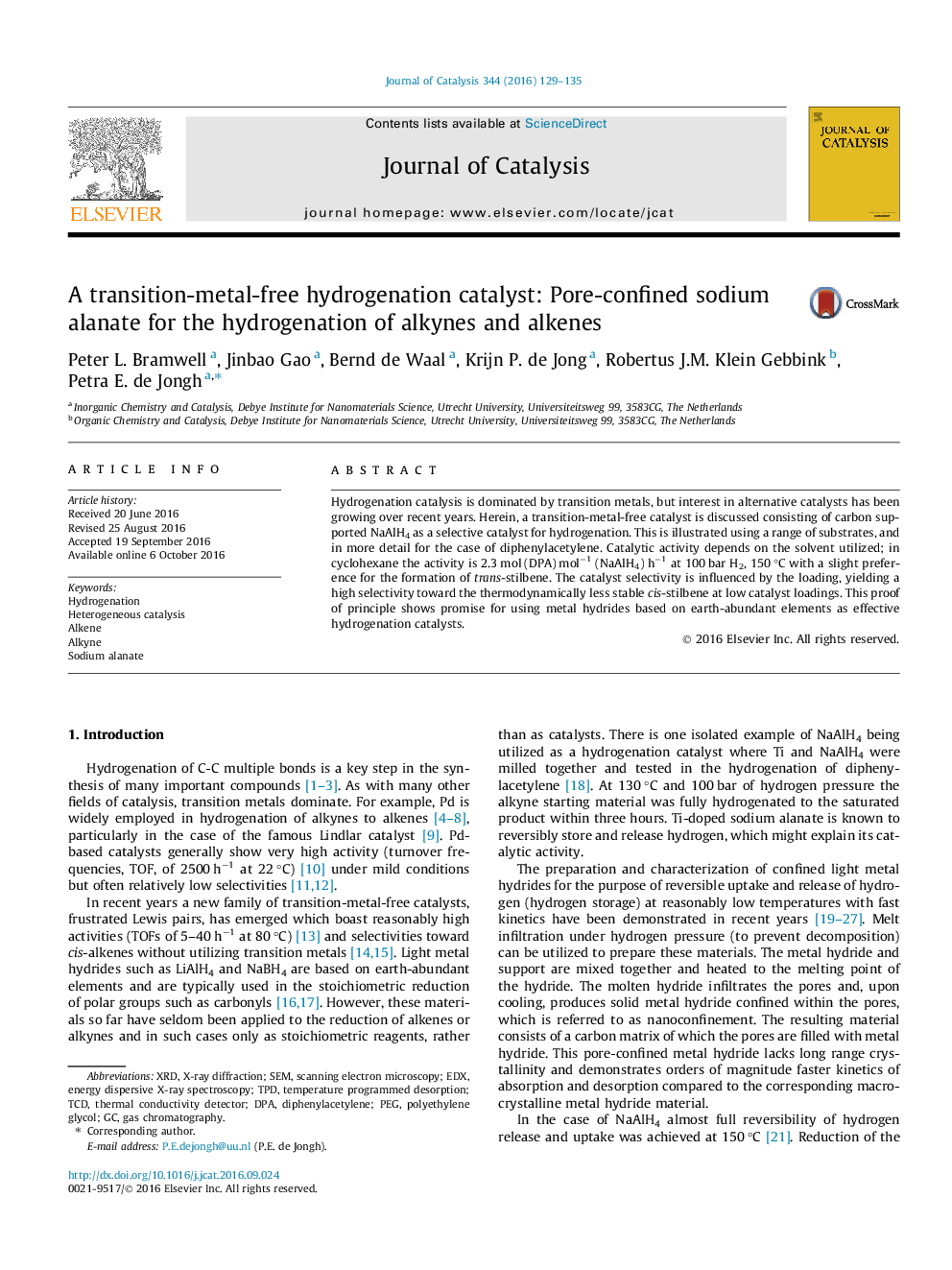| Article ID | Journal | Published Year | Pages | File Type |
|---|---|---|---|---|
| 6455763 | Journal of Catalysis | 2016 | 7 Pages |
â¢A NaAlH4/C nanocomposite is active in alkene and alkyne hydrogenation at 150 °C, 100 bar H2.â¢The catalyst is active in the hydrogenation of a number of substrates with different functionalities.â¢A toluene solvent yields a lower activity than cyclohexane due to competitive adsorption.â¢Isomerization from cis- to trans-stilbene is catalyzed by the catalyst.â¢Pre-treatment under an argon atmosphere gives a higher selectivity towards cis-stilbene.
Hydrogenation catalysis is dominated by transition metals, but interest in alternative catalysts has been growing over recent years. Herein, a transition-metal-free catalyst is discussed consisting of carbon supported NaAlH4 as a selective catalyst for hydrogenation. This is illustrated using a range of substrates, and in more detail for the case of diphenylacetylene. Catalytic activity depends on the solvent utilized; in cyclohexane the activity is 2.3 mol (DPA) molâ1 (NaAlH4) hâ1 at 100 bar H2, 150 °C with a slight preference for the formation of trans-stilbene. The catalyst selectivity is influenced by the loading, yielding a high selectivity toward the thermodynamically less stable cis-stilbene at low catalyst loadings. This proof of principle shows promise for using metal hydrides based on earth-abundant elements as effective hydrogenation catalysts.
Graphical abstractDownload high-res image (44KB)Download full-size image
